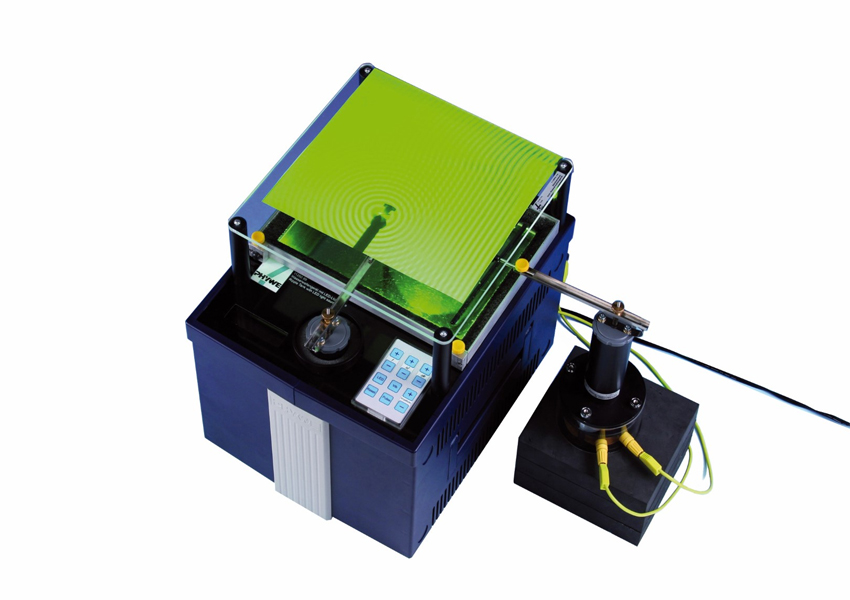Interference and diffraction of water waves with the Ripple Tank

Principle
A set of circular water waves is generated simultaneously and the resulting interference is observed. By increasing the number of interfering circular waves, Huygens’ Principle can be verified. With the aid of plane water waves, diffraction phenomena of waves at different obstacles (slit, edge, double-slit etc.) are investigated. In a further experiment, the principle of “phased array antennas” can be demonstrated. To do so, two circular waves are generated to interfere and the resulting interference pattern on varying the phase of one of the circular waves with respect to the other one is observed.
Benefits
- see and understand the laws that govern wave phenomena
- just add water – compact device offers fast and easy setup
- bright green LED offers qualities even for a demonstration experiment
External vibration generator for PHYWE Ripple Tank
PHYWE Ripple Tank with LED light source, complete set
Tasks
- Use the comb to generate two circular waves and observe the resulting interference. Increase the number of interfering circular waves up to ten by using all teeth of the comb to demonstrate Huygens’ Principle.
- Generate plane water waves and use a barrier to demonstrate diffraction at an edge. Then, form a slit and observe diffraction behind the slit. Repeat this experiment for a double-slit.
- By using the integrated wave generator as well as the external wave generator, generate two circular waves and observe the interference. Vary the phase of the external wave generator and observe the resulting interference pattern to understand the principle of “phased array antennas”.
What you can learn about
- Diffraction of water waves
- Interference of waves
- Huygens’ Principle
- Principle of “phased arrays antennas”
- Doppler-effect
